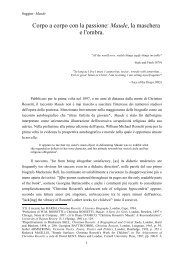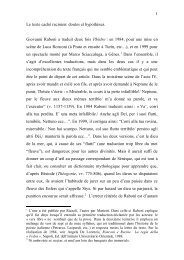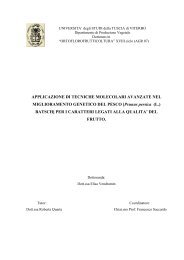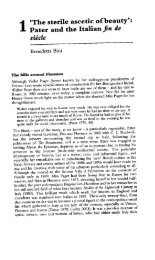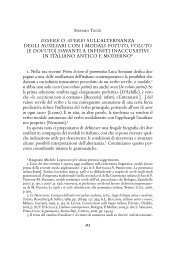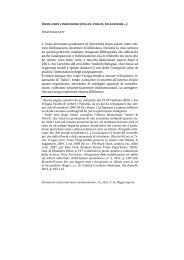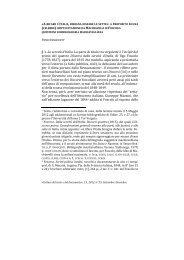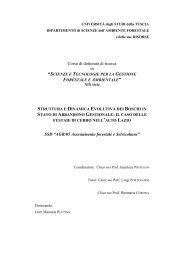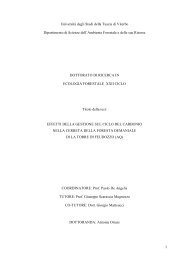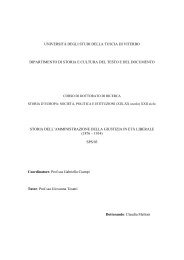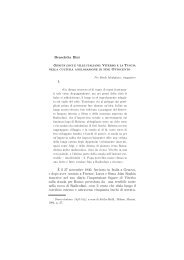drivers of soil respiration of root and microbial ... - Unitus DSpace
drivers of soil respiration of root and microbial ... - Unitus DSpace
drivers of soil respiration of root and microbial ... - Unitus DSpace
You also want an ePaper? Increase the reach of your titles
YUMPU automatically turns print PDFs into web optimized ePapers that Google loves.
24<br />
The experiment on partitioning <strong>of</strong> <strong>soil</strong> <strong>respiration</strong> was started in the beginning <strong>of</strong> the<br />
growing season <strong>of</strong> 2006 <strong>and</strong> terminated in September 2008. In particular, the following results can<br />
be highlighted:<br />
Average contribution <strong>of</strong> <strong>root</strong>-derived <strong>respiration</strong> to total CO2 efflux from <strong>soil</strong> in three years<br />
<strong>of</strong> measurements amounted to 30% with a great variation during the growing seasons (2-<br />
70%). An increase in <strong>root</strong> contribution, observed mainly during the drought periods in<br />
summer, was associated with higher sensibility <strong>of</strong> <strong>microbial</strong> <strong>respiration</strong> to changes in the<br />
<strong>soil</strong> water content.<br />
Daily variation <strong>of</strong> <strong>soil</strong> <strong>respiration</strong> <strong>of</strong> various origin couldn’ t be explained only by changes in<br />
<strong>soil</strong> temperature <strong>and</strong> <strong>soil</strong> moisture. Other factors are involved in controlling <strong>of</strong> diurnal<br />
variation <strong>of</strong> <strong>soil</strong> <strong>respiration</strong>.<br />
Seasonal variation <strong>of</strong> <strong>respiration</strong> <strong>of</strong> different origin was controlled by various factors:<br />
GPP resulted as a best predictor <strong>of</strong> changes in <strong>root</strong>-derived <strong>respiration</strong>. The correlation<br />
between photosynthesis <strong>and</strong> the effect on <strong>respiration</strong> was strongest after a lag <strong>of</strong> 20 hours. Soil<br />
temperature which <strong>of</strong>ten masks the GPP dependence, failed to explain changes in <strong>root</strong><br />
<strong>respiration</strong> at Amplero. In fact, the biomass increment which is usually observed under<br />
favourable temperatures <strong>and</strong> <strong>soil</strong> humidity was restricted by mowing <strong>and</strong> grazing.<br />
However, changes in <strong>soil</strong> temperature <strong>and</strong> <strong>soil</strong> water content explained well seasonal<br />
variation <strong>of</strong> <strong>microbial</strong> component <strong>of</strong> <strong>soil</strong> <strong>respiration</strong>. Being a larger part <strong>of</strong> total CO2 efflux<br />
from <strong>soil</strong> at Amplero (≈ 70%), these factors exert a significant influence also on total <strong>soil</strong><br />
<strong>respiration</strong> dynamic.<br />
Interannual variability <strong>of</strong> total <strong>soil</strong> <strong>respiration</strong> is controlled by the number <strong>of</strong> days with<br />
SWC




